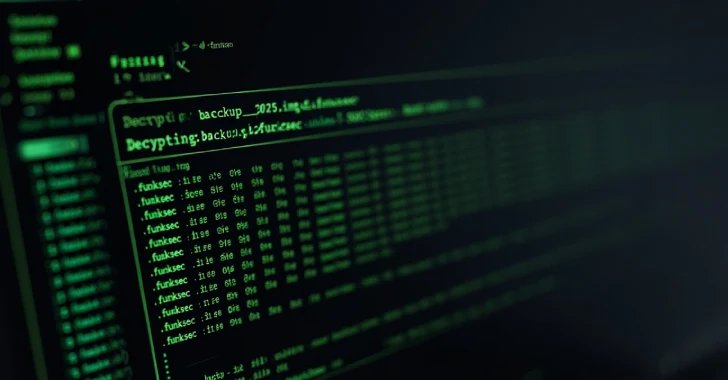Quick Takeaways
-
Decryptor Availability: Cybersecurity experts have released a free decryptor for FunkSec ransomware, which is considered defunct, allowing victims to recover files without payment.
-
Victim Statistics: FunkSec targeted 172 victims, predominantly in the U.S., India, and Brazil, affecting mainly technology, government, and education sectors since its emergence in late 2024.
-
AI Involvement: Analysis revealed FunkSec’s encryptor was likely developed with AI assistance, and the group displayed characteristics of inexperienced hackers seeking recognition.
- Technical Details: FunkSec uses the Rust programming language and employs Chacha20 and Poly1305 algorithms for encryption, increasing file sizes by approximately 37%, while the decryptor is accessible through the No More Ransom project.
The Issue
On July 30, 2025, cybersecurity experts, led by Gen Digital researcher Ladislav Zezula, announced the release of a free decryptor for the notorious ransomware strain FunkSec. This strain, which emerged in late 2024, wreaked havoc on a total of 172 victims—predominantly in the United States, India, and Brazil— targeting sectors such as technology, government, and education. Reports indicate that FunkSec was potentially developed by a cadre of novice hackers, seeking notoriety through their exploits, and was distinctive for its use of AI in crafting encryption methods. The combination of the Rust programming language and sophisticated algorithms such as Chacha20 and Poly1305 allowed FunkSec to execute rapid and difficult-to-detect attacks.
Interestingly, by mid-March 2025, FunkSec had ceased to bring in new victims, leading experts to believe the group might have disbanded. Gen Digital’s release of the decryptor has offered a lifeline to affected individuals, enabling them to regain access to their data without further financial extortion. While the specifics of how the decryptor was created remain undisclosed, victims are advised to validate their encrypted files using the unique .funksec extension and to follow initial recovery steps available on the No More Ransom project website. Such developments underscore the ongoing battle against cybercriminality, reinforcing the notion that even formidable threats can be countered with collaborative efforts in cybersecurity.
What’s at Stake?
The emergence of the FunkSec ransomware presents significant risks not only to its direct victims but also to surrounding businesses, users, and organizations, potentially sparking a cascade of cybersecurity vulnerabilities. As FunkSec predominantly targeted technology, government, and education sectors, the potential for collateral damage is pronounced; organizations within these sectors might face reputational harm, financial losses, and operational disruptions, as affiliated or adjacent entities may also experience increased scrutiny or be subjected to follow-up attacks, often referred to as “spillover” effects. Furthermore, the pervasive fear of ransomware might lead to heightened consumer wariness, resulting in decreased trust and engagement with affected services. This situation underscores the imperative for robust cybersecurity protocols and inter-organizational collaboration to fortify defenses against similar threats, thereby safeguarding the broader ecosystem from the cascading repercussions of cyber threats.
Possible Next Steps
As the threat landscape evolves, the significance of prompt remediation escalates, particularly in the wake of cyber threats like the recent FunkSec ransomware decryptor release.
Mitigation Strategies
- Implement robust backups
- Enhance endpoint security
- Conduct employee training
- Regularly update software
- Monitor network traffic
- Employ incident response planning
- Establish clear communication protocols
NIST CSF Guidelines
The NIST Cybersecurity Framework (CSF) emphasizes risk management and proactive strategies to mitigate potential threats. For exhaustive details, refer to NIST Special Publication 800-53.
Explore More Security Insights
Stay informed on the latest Threat Intelligence and Cyberattacks.
Access world-class cyber research and guidance from IEEE.
Disclaimer: The information provided may not always be accurate or up to date. Please do your own research, as the cybersecurity landscape evolves rapidly. Intended for secondary references purposes only.
Cyberattacks-V1

